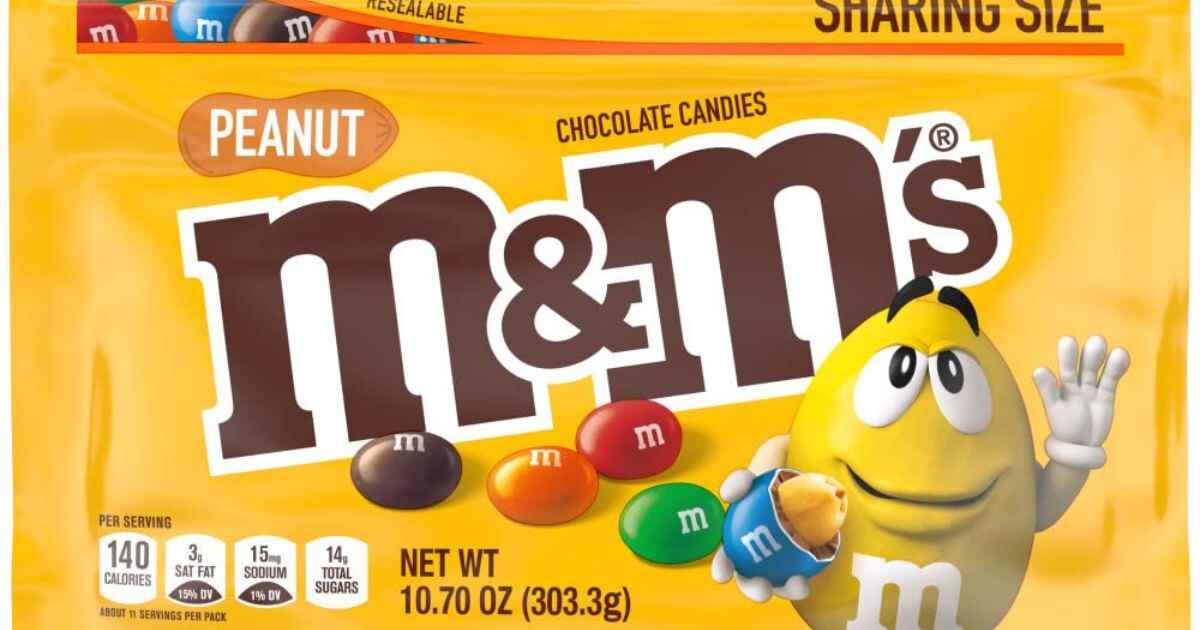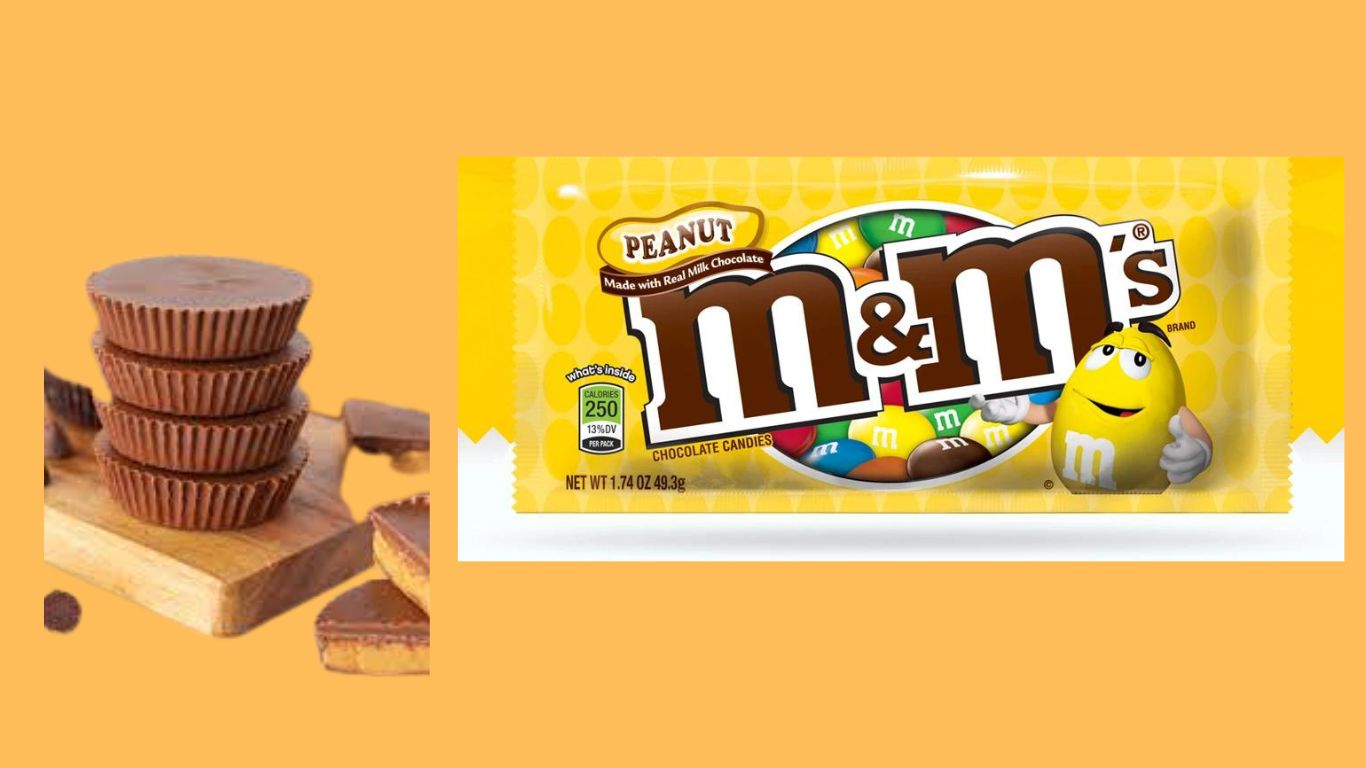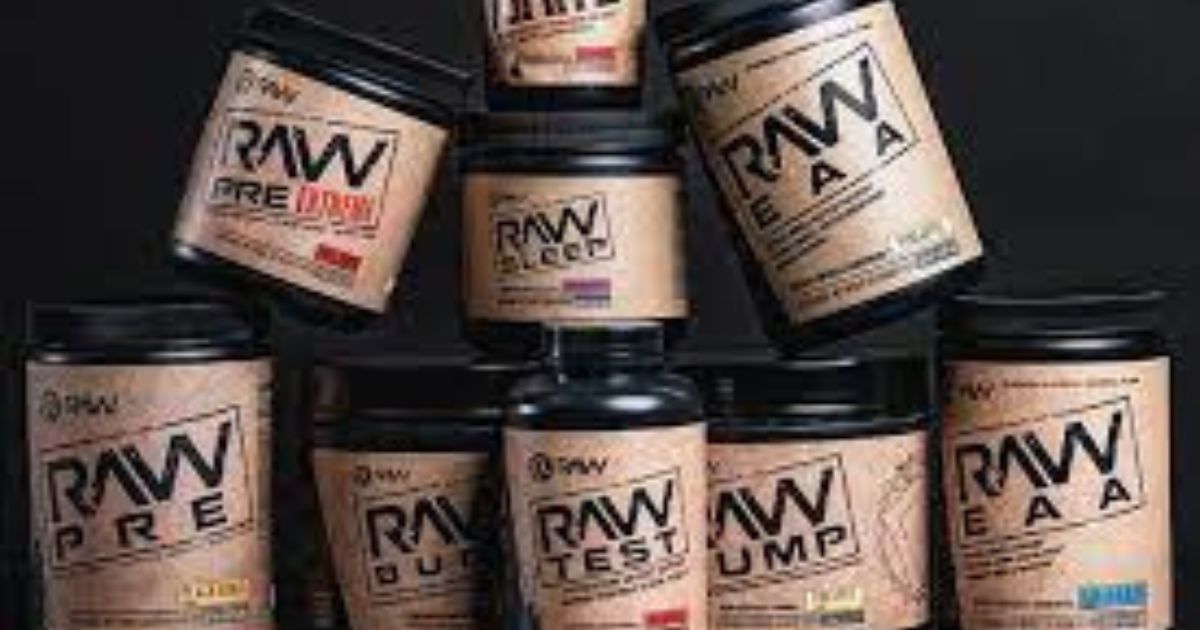One serving of m&m peanut contains 230 calories and 9g of fat. M&m peanut is a popular confectionery snack that is enjoyed by many.
It is the perfect treat to munch on during road trips, movie nights, or anytime you need a sweet treat. The candy-coated shell gives it a crunchy texture, while the peanut center offers a savory taste. M&m peanut’s nutritional facts reveal that one serving of this snack contains 230 calories and 9g of fat.
However, it is also a good source of protein and carbohydrates. In this article, we will take a detailed look at the nutritional composition of m&m peanut and its potential health benefits. So keep reading to discover everything you need to know about m&m peanut’s nutritional facts.

What Are M&M Peanuts?
M&m are a beloved chocolate candy that combines the crunchy texture of a peanut with the melt-in-your-mouth goodness of smooth milk chocolate. If you’re curious about these little treats and want to learn more, keep reading to discover some interesting facts about m&m peanuts.
Brief History Of M&M Peanuts
Did you know that m&m have been around since 1954? Here are some key points about their history:
- M&m peanuts were introduced as an addition to the original m&m’s milk chocolate candies.
- The idea for m&m was born when forrest mars sr. Saw soldiers in the spanish civil war eating chocolate-covered peanuts, a treat that wouldn’t melt in their pockets.
- The “m&m” in m&m’s stands for the last names of mars and bruce murrie, the son of a prominent hershey executive who had a 20% share in the candy’s production.
Packaging Options
M&m come in a range of packaging options, from snack-sized bags to larger containers for sharing. Here are some key points to note:
- M&m peanuts typically come in distinctive brown packaging that prominently features the brand’s signature “m” logo.
- The company has experimented with a variety of packaging options over the years, including limited edition designs for holidays and special occasions.
- In addition to the classic resealable bags, you can also find m&m peanuts in resealable plastic containers and larger bulk bags.
Popularity And Consumption
It’s no secret that m&m peanuts are a popular candy, enjoyed by people of all ages. Here are some key points about their popularity and consumption:
- These peanuts are the second most popular m&m variety in the united states, behind only the original milk chocolate version.
- Worldwide, m&m peanuts account for a significant portion of the brand’s overall sales.
- According to recent data, americans consume an average of 11 pounds of chocolate each year, which includes popular candy varieties like m&m peanuts.
M&M Peanut Nutrition Facts: Discover The Secret Benefits!

Do you enjoy snacking on nuts? What if we told you that m&m peanuts are not only delicious but also packed with health benefits? Here we will explore the nutrition facts of m&m peanuts and discover their secret benefits.
What Are Nutrition Facts?
Nutrition facts refer to the panel available on the packaging of a food product that provides detailed information on the nutrient content of the food. This includes information on calories, fat, protein, carbohydrates, vitamins, and minerals.
Explanation Of Why M&M Peanuts Are Great Snacks
M&m are an excellent snack for a variety of reasons. They are convenient, easy to store, and easy to carry with you on the go. Additionally, they are a great source of protein, which can help keep you feeling full and satisfied between meals.
Benefits Of Eating M&M Peanuts
There are numerous benefits to consuming m&m peanuts, including:
- They are high in protein, with approximately 3 grams of protein per serving.
- They contain fiber, which can help regulate bowel movements and improve overall digestive health.
- They are a good source of vitamin e, which is important for maintaining healthy skin and eyes.
- They contain healthy fats, which can help lower cholesterol levels and reduce the risk of heart disease.
M&M Peanuts’ Nutritional Value
In addition to the benefits listed above, m&m peanuts have the following nutritional value per serving of 1. 74 oz:
- Calories: 250
- Fat: 14g
- Saturated fat: 3.5g
- Trans fat: 0g
- Cholesterol: 0mg
- Sodium: 55mg
- Carbohydrates: 28g
- Fiber: 2g
- Sugars: 24g
- Protein: 5g
Health Benefits Associated With Consuming M&M Peanuts
Consuming m&m peanuts has numerous health benefits, including:
- Reducing the risk of heart disease: M&m peanuts are high in monounsaturated and polyunsaturated fats, which can help lower cholesterol levels and reduce the risk of heart disease.
- Boosting brain function: Peanuts are a good source of vitamin e, which can improve brain function and reduce the risk of cognitive decline.
- Lowering the risk of diabetes: Studies have shown that consuming peanuts can help lower blood sugar levels and reduce the risk of developing type 2 diabetes.
Comparison With Other Common Snacks
M&m peanuts are a great snack option when compared to other common snacks, such as potato chips and candy bars. Here is a comparison of the nutritional value of m&m peanuts versus potato chips and a candy bar:
| nutrient | m&m peanuts | potato chips | candy bar |
|———-|————-|————–|———-|
| Calories | 250 | 160 | 240 |
| Fat | 14G | 10G | 12G |
| Protein | 5G | 2G | 2G |
| Fiber | 2G | 1G | 1G |
As you can see, m&m peanuts are a great snack option compared to potato chips and candy bars as they are higher in protein and fiber and contain fewer calories and less fat.
M&m peanuts are a delicious snack that is packed with health benefits. With their high protein content, fiber, and healthy fats, they are an excellent choice for anyone looking for a nutritious snack.
Calories
Explanation Of What Calories Are
Calories are a unit of measurement of potential energy in food. It is the energy needed to raise the temperature of one gram of water by one degree celsius. Your body needs a certain amount of calories to function and perform daily activities.
In other words, calories refer to the amount of energy that food provides.
Caloric Value Of M&M Peanuts
M&m have a caloric value of 90 calories for every 16g serving. This serving includes 75% of carbohydrates, 3. 5% of protein and 21. 5% of fat. The nutritional value of the peanuts is relatively low when compared to other nuts due to the high amount of sugar present in the candy coating.
It is essential to note that the caloric values differ based on multiple factors, which include age, gender, and physical activity.
Relationship Between Consumption And Weight
Regularly consuming excess calories can lead to weight gain, as the body stores the extra calories as fat. M&m , when consumed in moderation, can form a part of a healthy balanced diet. However, overconsumption of the candy can result in weight gain and also increase the risk of health complications such as diabetes, heart disease, and other chronic illnesses.
Therefore, it is essential to consume these candy-covered peanuts in moderation and to ensure that your diet includes enough nutrients for good health.
Remember, healthy eating starts with moderation. Enjoying your favorite treats in moderation can be a part of a healthy diet, but it is essential to ensure that we do not overdo it with m&m peanuts to avoid unwanted health risks.
Fats
M&m peanuts are the perfect snack for all occasions. They have a sweet shell and a crunchy peanut inside, making them a popular treat among all ages. But, like all snacks, it’s essential to know the nutritional facts of m&m.
In particular, the information regarding fats is an important consideration. In this blog post, we will take a closer look at the fats contained in m&m peanuts, including the types of fats, the difference between saturated and unsaturated fats, and the effects of fat consumption on the body.
Types Of Fats Found In M&M
These peanuts contain two main types of fats, namely saturated and unsaturated fats. Saturated fats are commonly in foods made from animal products like full-fat dairy, fatty meats, and processed foods like cakes and biscuits. They solidify at room temperature and can raise bad cholesterol levels in the body.
On the other hand, unsaturated fats are typically from plant-based foods like nuts, seeds, and vegetable oils. These types of fats are liquid at room temperature and can help lower bad cholesterol levels.
Saturated Vs. Unsaturated Fats
It’s have both saturated and unsaturated fats. However, the amount of each type differs significantly. The major type of fat found in m&m peanuts is unsaturated fat. This type of fat is much healthier than saturated fat because it does not increase the risk of heart disease.
Furthermore, it lowers a person’s total cholesterol levels and reduces the risk of developing high blood pressure.
Effects Of Fat Consumption On The Body
Consuming too much fat can have detrimental effects on one’s health. It can cause a person to become overweight or obese. Moreover, a diet rich in saturated fat increases the risk of developing coronary heart disease. However, consuming unsaturated fats in moderation can have positive health benefits.
They improve heart health, reduce inflammation in the body, and slow down the aging process.
To conclude, knowing the types of fats contained in m&m peanuts is essential to maintaining a healthy diet. Eating unsaturated fats in moderation can help improve health outcomes. However, one must be aware that excess consumption of any type of fat can have detrimental effects on one’s health.
Therefore, enjoy m&m peanuts in moderation as part of a balanced diet.
Carbohydrates
M&M Nutrition Facts: Carbohydrates
M&m are an irresistible treat loved by people all over the world. They are so popular that you can find them in almost every grocery store. But have you ever wondered how many carbohydrates are in these tiny, colorful snacks?
In this section, we will explore the role of carbohydrates in the body, the types of carbohydrates found in m&m peanuts, and how many carbohydrates they contain.
Role Of Carbohydrates In The Body
Carbohydrates are an essential nutrient that our body needs to function correctly. They are the primary source of energy for our brain and muscles. When we consume carbohydrates, our body breaks them down into glucose, which enters our bloodstream and provides energy to our cells.
Without carbohydrates, we would feel weak, tired, and unable to perform our daily activities.
Types Of Carbohydrates Found In M&M Peanuts
These peanuts contain two types of carbohydrates: sugar and starch.
- Sugar: M&m contain two types of added sugar – corn syrup and sugar. A single 47g pack of m&m peanuts has a total of 30g of sugar.
- Starch: Peanut m&m’s predominantly contain cornstarch, which is a complex carbohydrate and is crucial for our body.
How Much Carbohydrates Do M&M Peanuts Contain
A single 47g pack of m&m peanuts contains a total of 36g carbohydrates, which makes up 12% of the recommended daily value.
- 30g of sugar
- 5g of dietary fiber
- 1g of protein
It is important to note that the american heart association recommends limiting added sugar consumption to 25g/day for women and 36g/day for men. Therefore, it is advisable to consume m&m peanuts in moderation or as an occasional treat.
M&m peanuts are a tasty snack that can satisfy your sweet cravings. They contain two types of carbohydrates – sugar and starch, which provide energy to our body. Although they are not the healthiest snack, they can be a part of a balanced diet if consumed in moderation.
Vitamins And Minerals
M&M Nutrition Facts: Vitamins And Minerals
M&m peanuts are a delicious and satisfying snack that also provide many essential vitamins and minerals. Here are some key nutrients found in these tasty treats:
Vitamin E
- M&m peanuts are a good source of vitamin e, with about 10% of the daily recommended intake in a single serving.
- Vitamin e is a powerful antioxidant that helps protect our cells from damage caused by harmful molecules known as free radicals.
- It also plays a role in maintaining healthy skin, hair, and nails.
Magnesium
- With about 10% of the recommended daily intake of magnesium in each serving of m&m, this snack is a good way to boost your magnesium levels.
- Magnesium is important for many bodily functions, including regulating blood pressure, maintaining healthy bones, and supporting muscle and nerve function.
Iron
- Iron is another essential mineral found in m&m peanuts, providing about 4% of the recommended daily intake in each serving.
- Iron is necessary for the production of hemoglobin, which carries oxygen in our blood. Without enough iron, we can experience fatigue, weakness, and other symptoms of anemia.
Phosphorus
- M&m are a good source of phosphorus, with about 10% of the daily recommended intake in each serving.
- Phosphorus is important for healthy bones and teeth, and it also plays a role in energy production and cell function.
Other Vitamins And Minerals Found In M&M
- In addition to the nutrients listed above, peanuts also contain small amounts of other essential vitamins and minerals, such as:
- Calcium
- Potassium
- Zinc
- Vitamin b6
- While these nutrients may be present in relatively small amounts, they can still contribute to overall health and well-being when consumed as part of a balanced diet.
Next time you reach for a handful of m&m peanuts, remember that you’re not just satisfying your cravings – you’re also getting a boost of essential vitamins and minerals!
Lowers Cholesterol
Explanation Of Cholesterol
Cholesterol is a type of fat that is produced naturally in the liver, and it is also found in the foods we eat. There are two types of cholesterol, ldl, and hdl. Ldl cholesterol is often referred to as ‘bad cholesterol’ as it can build up in the arteries and cause blockages.
On the other hand, hdl cholesterol is known as ‘good cholesterol’ because it helps to remove excess cholesterol from the blood and arteries.
Health Risks Associated With High Cholesterol
Having high levels of ldl cholesterol can lead to many health problems, including an increased risk of heart disease, stroke, and high blood pressure. When cholesterol builds up in the arteries, it can cause them to narrow, reducing blood flow to the heart and brain, leading to heart attacks or strokes.
How MM Peanuts Can Lower Cholesterol
M&m peanuts contain plant sterols that can help to lower cholesterol levels in the blood. Sterols are naturally occurring substances that can block the absorption of cholesterol in the intestines, reducing the amount of cholesterol that enters the bloodstream.
Here are some ways mm peanuts can lower cholesterol:
- Plant sterols can block the absorption of cholesterol, reducing cholesterol levels in the blood.
- M&m peanuts contain fiber, which can also help to lower cholesterol levels.
- Eating m&m peanuts as part of a balanced diet can help to reduce the risk of heart disease.
Incorporating m&m into your diet can be a beneficial way to reduce high cholesterol levels and promote heart health. However, it is important to remember to eat them in moderation as they contain sugar and can be high in calories.
Anti-Inflammatory
M&M Nutrition Facts: Anti-Inflammatory
We all know that inflammation is the body’s natural response to injuries and infections, but did you know that chronic inflammation can lead to various diseases such as arthritis, cancer, and diabetes? Inflammation can also speed up the aging process, making us more susceptible to illnesses.
Explanation Of Inflammation
Inflammation occurs when the immune system responds to damage in the body. It sends white blood cells to the affected area to fight off infection and repair the damage. Although inflammation is beneficial, chronic inflammation can lead to long-term health issues.
How M&M Can Reduce Inflammation
M&m peanuts are a delicious and convenient snack that can help reduce inflammation in the body. Here are some of the ways m&m peanuts can help:
- Peanuts contain healthy fats that can reduce inflammation in the body.
- Peanuts are an excellent source of vitamin e, which is a potent antioxidant that can reduce inflammation.
- The flavonoids present in m&m have anti-inflammatory properties that can help reduce the risk of chronic diseases.
Comparison With Other Anti-Inflammatory Snacks
M&m peanuts are not the only snack that can help reduce inflammation in the body. Here is a comparison of m&m peanuts with other anti-inflammatory snacks:
- Blueberries: Blueberries are a great source of antioxidants that can help reduce inflammation. However, they are not as convenient as m&m peanuts and can be expensive.
- Dark chocolate: Dark chocolate is a delicious snack that has anti-inflammatory properties. However, it can be high in calories and sugar, so it should be consumed in moderation.
- Almonds: Almonds are another excellent source of healthy fats that can reduce inflammation. However, they are not as flavorful as m&m peanuts.
M&m peanuts are a delicious and convenient snack that can help reduce inflammation in the body. They are a great alternative to other snacks that may be high in calories and sugar. So, the next time you’re looking for a quick and healthy snack, reach for a bag of m&m peanuts.
Rich In Fiber
M&M Nutrition Facts: Rich In Fiber
Are you looking for a tasty snack that’s also good for you? Look no further than m&m peanuts! These tiny treats contain a surprising amount of fiber, making them a smart choice for anyone looking to maintain a healthy diet.
In this post, we’ll explore the importance of fiber in your diet, how m&m peanuts can help you reach your daily fiber goals, and how they stack up against other high-fiber snacks.
Explanation Of Fiber And Its Importance
Before we dive into the specifics of m&m peanuts, let’s take a closer look at fiber and why it’s such a crucial part of a healthy diet. Put simply, fiber is a type of carbohydrate found in plant-based foods that the body can’t digest.
Instead, it helps keep your digestive system running smoothly by adding bulk to your stool and helping to prevent constipation. But fiber does far more than that! It’s also been linked to a reduced risk of heart disease, stroke, and type 2 diabetes.
Plus, high-fiber diets are often more satiating, meaning you’re less likely to overeat or snack on unhealthy treats.
How M&M Peanuts Are A Good Source Of Fiber
So how can m&m help you get your daily dose of fiber? Here are some key points:
- A single serving of m&m (approximately 1/4 cup) contains 3 grams of fiber.
- This might not sound like a lot, but it’s equivalent to 12% of the recommended daily intake of fiber for women and 8% for men.
- M&m peanuts are made with roasted peanuts, which are already a great source of fiber.
- The candy shell around the peanuts is also made with ingredients like corn starch and sugar, which contribute some additional fiber.
Comparison With Other High-Fiber Snacks
Of course, m&m peanuts aren’t the only snack with a fiber boost. How do they compare to some other popular high-fiber options when it comes to both taste and nutrition? Let’s take a look:
- One medium-sized apple contains about 4 grams of fiber, making it a great option for a sweet and healthy snack.
- A half-cup of black beans contains a whopping 8 grams of fiber, as well as protein, iron, and other nutrients.
- Three cups of air-popped popcorn contains around 3 grams of fiber, as well as antioxidants called polyphenols.
- A single serving of m&m peanuts stacks up well against these other snacks, offering a great balance of taste and nutrition.
M&m peanut are excellent snacks that are rich in fiber, help to maintain normal digestive function and improve overall health. At the same time, they are an incredibly tasty treat that can be part of a balanced diet. So why not grab a handful of m&m peanuts when you need a quick and satisfying snack?
Allergy
M&M Nutrition Facts
If you’re looking for a sweet and savory treat, you might have reached for a bag of m&m peanuts. These colorful candies are perfect for snacking, baking, or topping your ice cream sundae. However, some people may have to avoid eating them due to an allergy.
In this post, we will take a closer look at m&m peanut allergy, its symptoms, and who is at risk.
Explanation Of M&M Peanut Allergy
M&m contain peanuts, which are one of the most common allergens, and can cause serious allergic reactions in some people. Allergic reactions happen when the immune system identifies peanuts as harmful and reacts to them. They can range from mild symptoms like itching or hives to more severe reactions like anaphylaxis.
People who are allergic to peanuts should not consume m&m peanuts or any products that contain peanuts.
Symptoms Of M&M Peanut Allergy
Symptoms of m&m peanut allergy can be mild or severe and may include:
- Itching or tingling in the mouth or throat
- Swelling in the lips, tongue, or throat
- Hives, rash or skin itching
- Nausea, vomiting or diarrhea
- Runny or stuffy nose
- Wheezing, difficulty breathing, or tightness in the chest
- Anaphylaxis, a severe and life-threatening reaction that requires immediate medical attention
If you or someone you know experiences symptoms of m&m peanut allergy, seek medical attention immediately.
Who Is At Risk Of This Peanut Allergy
Anyone can develop a peanut allergy at any time, but some people are at a higher risk. If you or someone in your family has a history of allergies or asthma, you may be more likely to develop peanut allergy.
Additionally, children are more likely to develop peanut allergy than adults. If you suspect that you or your child may have a peanut allergy, talk to a doctor, who can perform a diagnosis and suggest appropriate treatment options.
It’s important to be aware of m&m peanut allergy, its symptoms, and risks. If you have a peanut allergy, avoid eating m&m and products containing peanuts. If you notice any allergic symptoms after eating m&m, seek medical attention immediately.
Weight Gain
How Consuming M&M Can Lead To Weight Gain
It’s not surprising that consuming m&m peanuts can lead to weight gain, as they are high in calories and fat content. Here are some key points to keep in mind:
- A single serving of m&m peanuts (1.74 oz or around 49 pieces) contains 250 calories, with 13 g of fat.
- There’s also a considerable amount of sugar (21 g), which can add up to your daily recommended limit.
- Overeating any type of candy or sweet treats can lead to weight gain, especially if they are consumed in large amounts.
How To Consume M&M Peanuts In Moderation
While it’s tempting to consume m&m peanuts by the handful, moderation is key if you want to avoid weight gain. Here are some tips on how to consume m&m peanuts in moderation:
- Check the serving size information on the packet, and limit your intake accordingly. A serving size of m&m is around 49 pieces, which may seem small, but can still fulfill your candy cravings.
- Consider sharing your m&m peanuts with friends or family members, so that you’re not tempted to eat the entire packet by yourself.
- Try snacking on m&m peanuts along with high-protein snacks, such as almonds or yogurt. This can help you feel fuller for longer and reduce your overall calorie intake.
Remember, consuming m&m peanuts in moderation is key to avoiding weight gain.
Why M&M Peanut Nutrition Facts Matter
Importance Of Knowing M&M Peanut Nutrition Facts
Understanding the nutritional value of foods is vital for maintaining a healthy and balanced diet. This is why it’s essential to know the m&m peanut nutrition facts. Here are the key reasons why:
- Allows you to track your calorie and sugar intake: By knowing the nutrition facts of m&m peanuts, you can keep count of your daily calorie and sugar intake, which can be beneficial for those trying to manage their weight or those with diabetes.
- Helps you make informed choices: People who have certain dietary restrictions, such as gluten intolerance or lactose intolerance, can make informed choices about the food they consume based on the nutritional information provided.
- Enables you to monitor nutrient intake: M&m peanuts contain nutrients like calcium, vitamin e, and iron. By knowing the nutrition facts of this snack, you can monitor your intake of these nutrients and make sure you are getting enough of them in your daily diet.
How M&M Peanut Nutrition Facts Can Influence Dietary Choices
Being aware of m&m peanut nutrition facts can heavily influence dietary choices. Here’s how:
- Helps maintain healthy eating habits: With the nutritional information available, individuals can make mindful and healthy choices about what they consume when snacking on m&m peanuts.
- Encourages portion control: Knowing the calorie count, sugar, and fat content, and serving size can deter people from binge-eating m&m peanuts, helping with weight management.
- Promotes a balance of nutrients: As m&m peanuts contain both protein and fibre, they make for a balanced and filling snack choice.
By making informed decisions about the nutritional content of foods, individuals can build and maintain healthier eating habits. Knowing the nutrition facts of m&m peanuts can influence someone’s dietary choices, leading to healthier living while still being able to enjoy tasty snacks.
Frequently Asked Questions For M&M Peanut Nutrition Facts
Are M&M Peanuts Healthy?
M&m peanuts contain protein, fiber, and essential vitamins and minerals required to keep your body healthy. However, they also contain added sugar and calories, so be sure to consume them in moderation.
How Many Calories Are In A Bag Of M&M Peanuts?
A 1. 74 oz (49g) bag of m&m peanuts has 250 calories, making it an ideal snack to satisfy your sweet cravings.
Are M&M Peanuts Gluten-Free?
M&m peanuts do not contain any gluten ingredients. However, they are not certified gluten-free, so cross-contamination can occur during the production process.
Can M&M Peanuts Cause Allergies?
M&m peanuts contain peanuts, which can lead to allergic reactions in people with peanut allergies. It is important to always read the label and ingredients before consuming.
How Many M&M Peanuts Are In A Serving?
A serving of m&m peanuts is 1. 5 oz (42g) or about 1/4 cup, which contains about 210 calories, 30g of sugar, and 8g of protein. This serving size typically contains around 30-35 pieces of m&m peanuts.
Do M&M Peanuts Contain Artificial Colors?
M&m peanuts contain artificial colors, which are added to create the bright colors of the candy shells. The fda approves artificial colors as safe for human consumption.
Conclusion
It’s clear that m&m peanuts can be a tempting snack for people with a sweet tooth, but it’s also important to be aware of the nutritional content. Although they contain some beneficial nutrients like protein and fiber, they are high in calories and sugar.
It’s okay to indulge in moderation, but as with any treat, it’s important to be mindful of portion sizes. There are some simple substitutions that can be made to create a healthier snack option, like mixing in some nuts or dried fruit.
For those who are looking to maintain a healthy diet, it’s important to focus on consuming a well-rounded diet rich in whole foods. At the end of the day, there’s no need to completely abstain from sweets, but being aware of the nutrition facts can help inform your snack choices.




